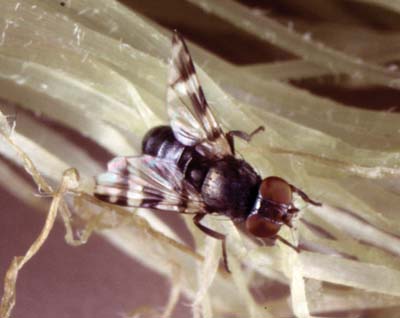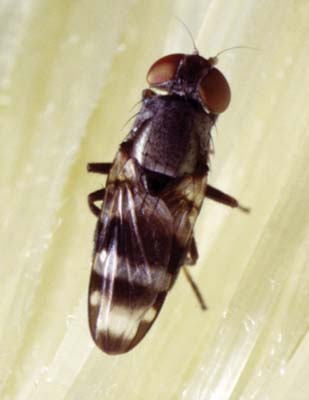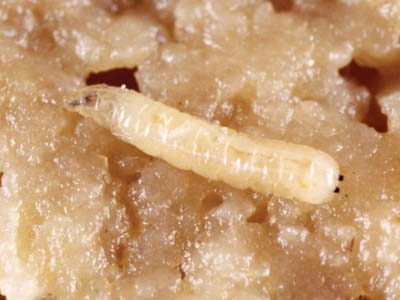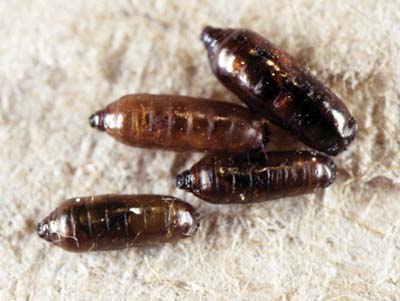Cornsilk Fly, Euxesta stigmatias
(Diptera: Otitidae)
The cornsilk fly is a pest in the United States in southernmost Florida, Puerto Rico, and the Virgin Islands. Recently it has become a pest in south central Florida and there are some reports of its occurrence from a few other states in the US. The life cycle requires about 30 days so it is apparent that several generations occur each year. The ability to overwinter is unknown. Eggs are deposited at the tip of the ear of corn, on or near the silk at the point of emergence from the ear. Young ears are usually attacked, with old ears being avoided. Eggs are white and round in shape. The larvae are white in color with the bottom side having ridges and coarse spines. Pupation usually occurs on the corn silks inside the corn ears, but may occur in the soil. The pupae are usually yellowish initially, becoming brown after a few hours, and then dark brown upon maturity. Adult flies are metallic green or black with reddish eyes, and wings banded in black.
Adults and larvae feed on a wide variety of host plants including vegetables such as sweet corn, tomato, and potato. Damage is caused by the larval stage. The larvae feed on silks but the main injury occurs on the developing kernels on the ear. Larvae may also bore into the cob resulting in deformity. Significant damage may even occur when insecticides are applied. Sampling and management techniques are poorly developed. Sampling should be conducted before tasseling is initiated. Growers rely on frequent insecticide applications to maintain a toxic residue on the rapidly growing corn silk. By bagging the ear, the number of larvae found in the ear can be greatly reduced but this option is labor intensive. Alternatives to insecticides are very few.
Images
To save the Web-optimized images shown below to your hard drive:
PC users: right click to "Save Picture (or Image) As..."
Mac users: click and drag to your desktop.
Copyright © 2005 University of Florida





